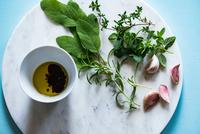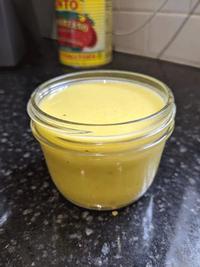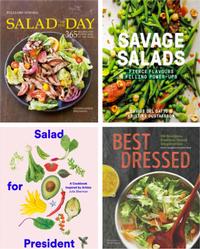There may be no better way to dress your salad than with a healthy, homemade vinaigrette! While choosing a salad may seem like an inherently nutritious option (and it often is!), adding the wrong dressing can drown out the health benefits. Many times store-bought, prepackaged salad dressings are high in saturated fat and may contain cheeses and preservatives which quickly add calories and sodium to your otherwise beautiful, green creation.
One of the best ways to maintain control of your salad is to make your own dressing, as well! The good thing is, nothing can be simpler than putting together a delicious, DIY Vinaigrette.
When you hear the word vinaigrette, what do you picture? For me, it’s shaking a jar or bottle. That’s where the salad science comes in. A vinaigrette’s main components are oil and vinegar, and they make up a classic example of an emulsion—a mixture of two or more liquids that do not naturally combine. Hence, the shaking! By doing so, you create a temporary emulsion in which the liquids stay together for a short time before separating. Try as you might, without a stabilizing component, these ingredients will drift apart. Adding in an "emulsifier" like honey or mustard (or honey mustard) will delay the separation, but without the addition of lecithin (like an egg yolk) or less natural ingredients (i.e. chemicals), you will need to periodically blend the ingredients together to suspend them once more! If you love science and want to learn more about the chemistry of vinaigrettes, check out this fun Science Friday Experiment: Emulsion Lab!
Now for the how-to, and the math, of creating your own vinaigrettes...
There is a well known "magic ratio" of 3:1 when it comes to creating the base of your dressing. This refers to most vinaigrettes containing a base of 3 parts oil to 1 part vinegar (or other acidic elements, such as lemon juice). This can be adjusted to fit personal preferences, but is a great starting point for ensuring that vinaigrettes are smooth and not too sour. The oils can be light, like safflower or extra virgin olive oil, or heavier, like a walnut or avocado oil. For the vinegar, use a cider option for a fruity taste or a balsamic for a darker, richer flavor. A great tip is to ensure that the vinaigrette is matched to the type of green you’ll be using—a spring mix goes best with a light vinaigrette, while a bold option (with, say, red wine vinegar) goes best with sharper, darker greens like arugula or kale. While simply whisking together the oil and vinegar and adding a dash of salt and pepper is a great start, don’t let the fun end there! Experiment by adding in alliums, herbs, mustards, and sweeteners for an almost endless combination to taste test.
Lemon Garlic Vinaigrette... with a kick!
- 3/4 cup extra virgin olive oil
- 1/4 cup apple cider vinegar
- 1 Tbsp lemon juice
- 1 clove garlic
- 1/4 tsp crushed red pepper flakes (adjust according to how much you like spice!)
- Salt and pepper (to taste)
Combine all ingredients in a blender or food processor, and enjoy!
Looking for more inspiration? Check out these ebooks filled with salads (and vinaigrettes) that you can read online!
- Salad of the Day: 365 Recipes for Every Day of the Year by Georgeann Brennan
- Savage Salads by Davide del Gatto and Kristina Gustafsson
- Salad for President: A Cookbook Inspired by Artists by Julia Sherman
- Best Dressed: 50 Recipes, Endless Salad Inspiration by Dawn Yanagihara
Have a question for Free Library staff? Please submit it to our Ask a Librarian page and receive a response within two business days.



